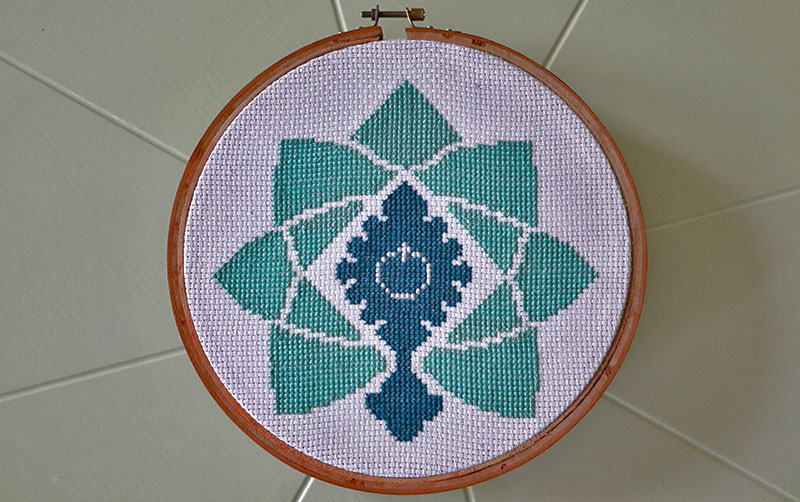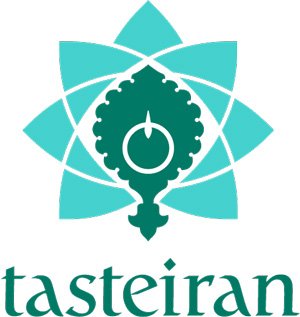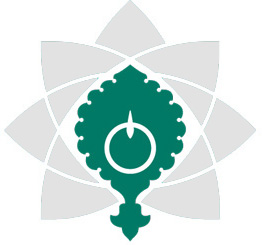 Signin with Google
Signin with Google Signin with Facebook
Signin with FacebookThe Story Behind TasteIran Logo

You may already know the purpose and values of TasteIran, by reading the story behind our mission. Thus, you know that our main goal is to encourage people from everywhere in the world to discover the beauties and stories of Iran, through its century-old culture.
So you may wonder what does the logo of TasteIran represent. And maybe you've already recognized some typical Persian patterns. Indeed, TasteIran logo is a combination of our dearest symbols in Iranian tradition, which carry the idea of welcoming the visitor to our home, hence our beautiful land. But let's get into the details.

Mandalas, a love for symmetry and purity of lines
The main shape you might recognize is the mandala. Often associated with Hinduism and Buddhism, mandalas are, in fact, a common feature of Persian architecture and arts throughout the centuries. The lotus flowers decorating the walls of Persepolis, for instance, remind the mandalas patterns, which can be found in so many Iranians handicrafts, from Mina Kari to carpets and woodwork. Any visitor can appreciate the most stunning mandalas by raising the head under the dome of any mosque, to get mesmerized by the patterns of its ceiling. Symmetry is a key feature of Persian architecture and arts. The most stunning example of Persian mandala is the ceiling of Sheikh Lotfollah mosque in Isfahan, with its incredible interlaced circles and squares.

Shamseh, the kind light of the sun
This stunning and unique mandala in Sheikh Lotfollah mosque represents the most iconic Persian pattern: "Shams", or "Shamseh", which means "sun" in Arabic. This circular pattern is a representation of the universe: the many rays gravitating around the center symbolize all the creatures of this world, linked to God, represented by the center. The Shamseh is thus the symbol of the divine and benevolent light of the sun. This motif was wildly used during the Safavid time in Iran, and is not only an architecture feature but can also be found in every Persian craft, from tiling to embroidery and miniature. In TasteIran logo, this symbol is here as a reminder that all visitors are welcomed in Iran under the light of kindness and hospitality.
The Persian Blue and Green Colors
In the Persian tradition, this light of kindness is supposed to be blue, and this is why blue color is everywhere in Iran, from the sparkling domes of the mosques to the fine Mina Kari vase of Isfahan. This blue is unique and known as Persian Blue. It comes in three major tones, from Persian blue proper (bright medium blue) to medium Persian blue (a slightly grayish blue), and dark Persian blue (close to indigo color). This Persian Blue color is a representation of the Lapis Lazuli, this precious and amazing stone which comes from Iran and Afghanistan. Along with the Persian Blue Color, TasteIran logo has mostly tones of Persian Green, which is the other main color associated with Iran. It's also a precious stone which has given birth to the Persian Green color: the malachite. This green is close to the blue color and is very popular in Iran, thus, it can be found in all traditional architecture and handicrafts. It is a symbol of nature and embodies Persian Gardens, themselves a representation of heaven and purity.
Kubeh, an offer to taste what is behind the door
Finally, as an invitation to step in and discover the land of Iran, the logo of TasteIran also includes a Kubeh. This round and long shape can be found on the wooden doors at the entrance of the houses in the old villages of Iran, as well as the ancient neighborhood of the cities. It is the ancestor of the doorbell. As for the name TasteIran, the Kubeh is an invitation to "taste" what is behind the door and discover the wonders of Iran. It is the sign that visitors are welcomed wholeheartedly. It represents the importance of having guests in Persian culture. Kubeh exists in two shapes, one for men, the other for women, producing two different sounds to indicate to the host the gender of the visitor. But knocked alternatively, the Kubeh signifies the arrival of a favorite group of guests, and thus, the beginning of a joyful gathering between the host and its guests. The background of the door knockers is circular in order to remind Shams, the sun, and thus welcome visitors under the light of kindness.

All these are the purposes of TasteIran. It's an invitation to enter our home, under the benevolent light of the sun, and taste all the wonders of Iran which are waiting behind the doors.